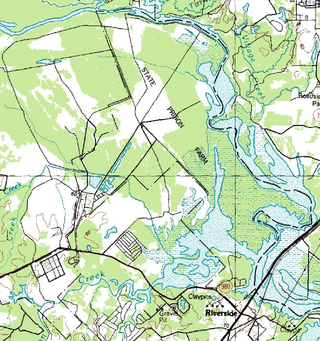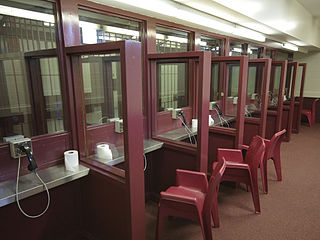Related Research Articles

Restorative justice is an approach to justice that aims to repair the harm done to victims. In doing so, practitioners work to ensure that offenders take responsibility for their actions, to understand the harm they have caused, to give them an opportunity to redeem themselves, and to discourage them from causing further harm. For victims, the goal is to give them an active role in the process, and to reduce feelings of anxiety and powerlessness.

Prison Fellowship is the world's largest Christian nonprofit organization for prisoners, former prisoners, and their families, and a leading advocate for justice reform.

Incarceration in the United States is one of the primary means of punishment for crime in the United States. In 2023, over five million people were under supervision by the criminal justice system, with nearly two million people incarcerated in state or federal prisons and local jails. The United States has the largest known prison population in the world, it has 5% of the world’s population, and 20% of the world’s incarcerated persons. China, with four times more inhabitants, has fewer persons in prison. Prison populations grew dramatically beginning in the 1970s, but began a decline around 2009, dropping 25% by year-end 2021.
Marilyn Gambrell is a parole-officer-turned-teacher who started the program No More Victims at the M.B. Smiley High School in Houston, Texas. The program was developed to assist children with incarcerated parents, hoping to prevent them from following in their parents' footsteps. Since the program's start in 1993, hundreds of children have graduated under her tenure.

The American juvenile justice system is the primary system used to handle minors who are convicted of criminal offenses. The system is composed of a federal and many separate state, territorial, and local jurisdictions, with states and the federal government sharing sovereign police power under the common authority of the United States Constitution. The juvenile justice system intervenes in delinquent behavior through police, court, and correctional involvement, with the goal of rehabilitation. Youth and their guardians can face a variety of consequences including probation, community service, youth court, youth incarceration and alternative schooling. The juvenile justice system, similar to the adult system, operates from a belief that intervening early in delinquent behavior will deter adolescents from engaging in criminal behavior as adults.

Fighting the Odds: The Marilyn Gambrell Story is a 2005 TV film which tells the true story of a former parole officer named Marilyn Gambrell, who helped a group of students at M. B. Smiley High School in Houston, Texas, United States. The students had either been raped, sexually harassed and/or beaten by their own parents. Marilyn helped the students learn to fight back for one another and for themselves. For this, she created the No More Victims program.

M.B. Smiley High School was a public secondary school in Houston, Texas, United States. Smiley, which served grades 9 through 12, and was a part of the North Forest Independent School District. M.B. Smiley was featured in the film Fighting the Odds: The Marilyn Gambrell Story, which aired on Lifetime. The campus is now used as the main campus for North Forest High School.
A prison nursery is a section of a prison that houses incarcerated mothers and their very young children. Prison nurseries are not common in correctional facilities in the United States, although prior to the 1950s many states had them and they are widespread throughout the rest of the world.

Children At Risk is a 501(c)(3) non-profit organization that drives changes for children through research, education, and influencing public policy. Founded in the year of 1989 in Houston, Texas and with an office opened in North Texas in 2011, the organization focuses on the well-being of children and educates legislators on the importance of solving children's issues while at the same time focusing on a variety of issues, and the primary issues are human trafficking, food insecurity, education, and parenting. Children At Risk also has a North Texas office in Dallas, Texas. Some of Children At Risk's previous primary issues were juvenile justice, mental health, and Latino children.

The Texas Youth Commission (TYC) was a Texas state agency which operated juvenile corrections facilities in the state. The commission was headquartered in the Brown-Heatly Building in Austin. As of 2007, it was the second largest juvenile corrections agency in the United States, after the Florida Department of Juvenile Justice. As of December 1, 2011, the agency was replaced by the Texas Juvenile Justice Department.

In the United States, human trafficking tends to occur around international travel hubs with large immigrant populations, notably in California, Texas, and Georgia. Those trafficked include young children, teenagers, men, and women; victims can be domestic citizens or foreign nationals.

The United States incarcerates more of its youth than any other country in the world, although reports claim China has around 600,000 juveniles imprisoned which would be more than the US, through the juvenile courts and the adult criminal justice system, which reflects the larger trends in incarceration practices in the United States. In 2010, approximately 70,800 juveniles were incarcerated in youth detention facilities alone. As of 2006, approximately 500,000 youth were brought to detention centers in a given year. This data does not reflect juveniles tried as adults. As of 2013, around 40% were incarcerated in privatized, for-profit facilities.

W. J. "Jim" Estelle Unit also known as the Estelle Supermax Penitentiary, is a prison located on Farm to Market Road 3478 in unincorporated Walker County, Texas, United States, 10 miles (16 km) north of central Huntsville. The prison, with about 5,459 acres (2,209 ha) of space, is operated by the Texas Department of Criminal Justice. The unit, which opened in June 1984, was named after Ward James "Jim" Estelle, a former prison director of Texas.
Indigenous Australians are both convicted of crimes and imprisoned at a disproportionately higher rate in Australia, as well as being over-represented as victims of crime. As of September 2019, Aboriginal and Torres Strait Islander prisoners represented 28% of the total adult prisoner population, while accounting for 2% of the general adult population. Various explanations have been given for this over-representation, both historical and more recent. Federal and state governments and Indigenous groups have responded with various analyses, programs and measures.

As of 2013, across the world, 625,000 women and children were being incarcerated in correctional facilities, and the female prison population was increasing in all continents. The list of countries by incarceration rate includes a main table with a column for the historical and current percentage of prisoners who are female.

The alternatives to imprisonment are types of punishment or treatment other than time in prison that can be given to a person who is convicted of committing a crime. Some of these are also known as alternative sanctions. Alternatives can take the form of fines, restorative justice, transformative justice or no punishment at all. Capital punishment, corporal punishment and electronic monitoring are also alternatives to imprisonment, but are not promoted by modern prison reform movements for decarceration due to them being carceral in nature.

The incarceration of women in the United States refers to the imprisonment of women in both prisons and jails in the United States. There are approximately 219,000 incarcerated women in the US according to a November 2018 report by the Prison Policy Initiative, and the rate of incarceration of women in the United States is at a historic and global high, with 133 women in correctional facilities per every 100,000 female citizens. The United States is home to just 4% of the world's female population, yet the US is responsible for 33% of the entire world's incarcerated female population. The steep rise in the population of incarcerated women in the US is linked to the complex history of the war on drugs and the US's prison–industrial complex, which lead to mass incarceration among many demographics, but had particularly dramatic impacts on women and especially women of color. However, women made up only 10.4% of the US prison and jail population, as of 2015.

Relationships of incarcerated individuals are the familial and romantic relations of individuals in prisons or jails. Although the population of incarcerated men and women is considered quite high in many countries, there is relatively little research on the effects of incarceration on the inmates' social worlds. However, it has been demonstrated that inmate relationships play a seminal role in their well-being both during and after incarceration, making such research important in improving their overall health, and lowering rates of recidivism.
Osborne Association is a non-governmental, multi-service, criminal justice reform, and direct service organization. Osborne runs programs for people who have been in conflict with the law and their families. It operates from community offices in Brooklyn, The Bronx, Buffalo, Manhattan, and Newburgh, New York, White Plains, New York, Troy, New York and inside more than forty New York State prisons and jails. They work with the families and communities of incarcerated individuals to try and redress harm done by the criminal justice system, whilst also working to reform the system by challenging racist policies and retributive justice.

Decarceration in the United States involves government policies and community campaigns aimed at reducing the number of people held in custody or custodial supervision. Decarceration, the opposite of incarceration, also entails reducing the rate of imprisonment at the federal, state and municipal level. As of 2019, the US was home to 5% of the global population but 25% of its prisoners. Until the COVID-19 pandemic, the U.S. possessed the world's highest incarceration rate: 655 inmates for every 100,000 people, enough inmates to equal the populations of Philadelphia or Houston. The COVID-19 pandemic has reinvigorated the discussion surrounding decarceration as the spread of the virus poses a threat to the health of those incarcerated in prisons and detention centers where the ability to properly socially distance is limited. As a result of the push for decarceration in the wake of the pandemic, as of 2022, the incarceration rate in the United States declined to 505 per 100,000, resulting in the United States no longer having the highest incarceration rate in the world, but still remaining in the top five.